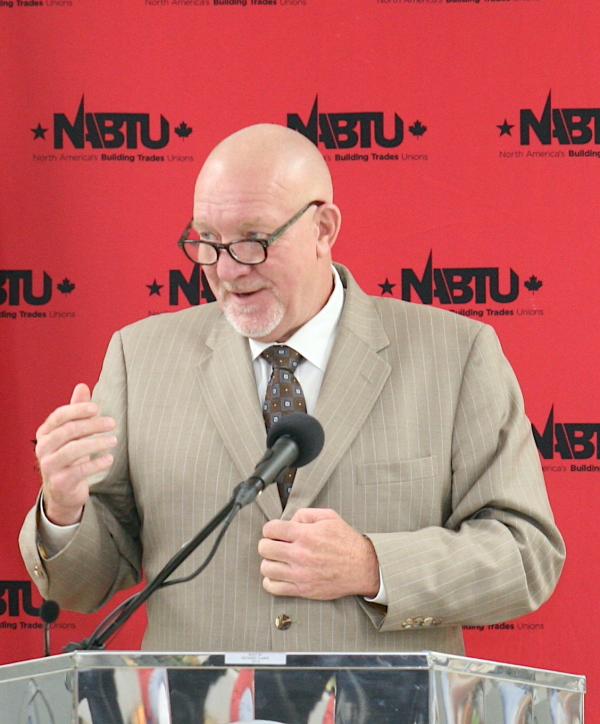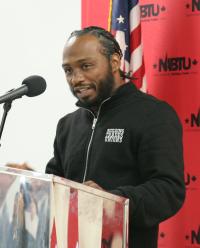May 24, 2023

Sean McGarvey, above, president of North America’s Building Trades Unions and Chaton Green, inset, business agent for the Greater Boston Building Trades Union. Seth Daniel photos

One of the country’s top union officials, Sean McGarvey, the president of North America’s Building Trades Unions (NABTU), brought an urgent message to the Sheetmetal Workers Union training center in Lower Mills last Wednesday, pitching a once-in-a-generation opportunity to build out massive infrastructure funded by the federal government.
McGarvey, 60, of Philadelphia, sat down with the Reporter before headlining a morning of activities at the Local 17 hall on Adams Street. He said the trades unions need women, communities of color, at-risk young people, and even those currently incarcerated to train and join the “infrastructure generation” as a bridge to joining the middle class.
“In the history of the US,” he said, “there has only been one other era that presented the opportunities we’re presented with today and that’s at the conclusion of World War II,” he said. “That’s the opportunity we’re talking about. I can tell you the building trades is going to do its part.”
The US workforce needs to build capacity, he added, “and we’re going to need lots and lots of people with specific skill sets to make that happen.”
Nationally, McGarvey said, there is $4 trillion worth of investments coming on line over the next 10 years, $9.5 billion of it to Massachusetts alone, as part of several federal spending bills signed into law. These outlays, he said, allow for people to get trained and earn high-paying jobs without having to attend a four-year university and rack up large amounts of debt.
The key will be recruiting workers and getting them into one of the apprentice programs available throughout the country. In Dorchester alone, he noted, there are seven regular apprentice programs for various trade unions – including the Sheetmetal Workers – but union officials will need to think differently to get larger numbers of diverse workers and women through them.
He said the goal of his visit to Boston was to validate and congratulate the trade unions here for “doing it the right way,” particularly through the Building Pathways program championed by former Secretary of Labor Marty Walsh when he was with the Greater Boston Building Trades Union (BBTU).
“Boston in particular has done amazing work and all Massachusetts, too, when it comes to women and all of the other people we want to work with,” he said.
McGarvey said Boston has figured out how to draw in diverse workers and women to Building Pathways and then prepare them to enter the regular apprentice programs. That required them to think differently about how to serve these potential members.
Some of the challenges include addressing the need for high-quality, affordable childcare on worksites and assisting workers in getting a vehicle.
“It’s hard to be in the building trades without a driver’s license and a vehicle,” he said, “because you could work downtown accessible by public transportation and then you can get sent out to a job two counties away,” he said.
“We’re down to helping people procure their first vehicle and getting car insurance,” he added. Those are things that we didn’t think about 20 years ago, but it’s what we’re doing now.”
Joining McGarvey at the gathering last week were, among others, Frank Callahan, president of the Massachusetts Building Trades Union, Chaton Green, business agent of the Greater Boston Building Trades Union, Shamaiah Turner of Local 17, and Gov. Healey’s labor chief, Lauren Jones.


